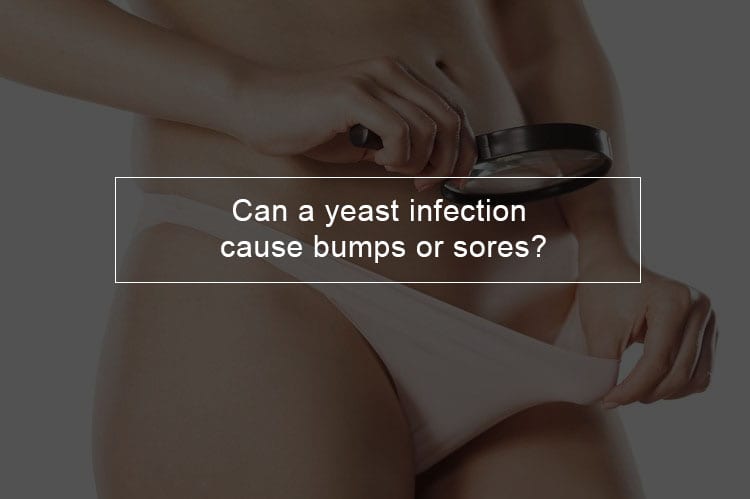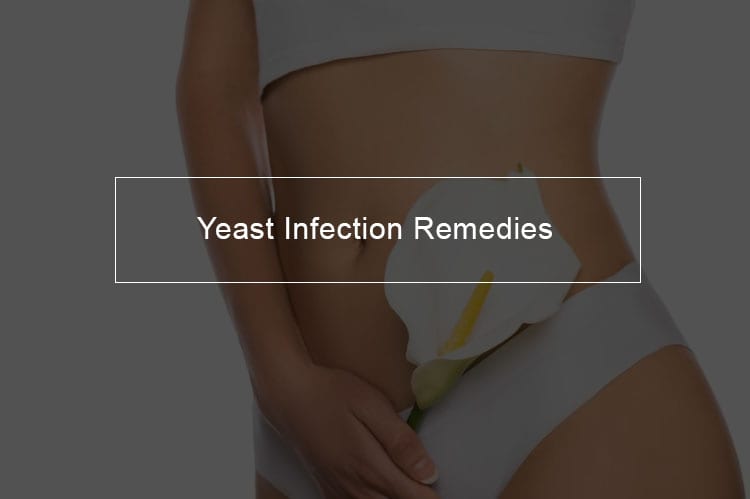
Yeast infection sores or blisters can develop as a result of a complication of yeast infection on skin or genitals. This can be a result of treatment that aggravated the skin issue, or due to lack of treatment. Yeast infections resulting in sores or blisters are not very common. Thus, if you have sores or blisters, it is very important you identify their exact cause, since they may be caused by STDS such as genital herpes or other medical conditions. There are several conditions which can cause skin sores or blisters.
Can yeast infection cause bump?
Yeast infection causes
It might feel like itching or even irritating. Or you may experience extreme swelling which leads to sores. Whether your signs are mild or severe, a yeast infection can be uncomfortable. Yeast infection is also known as vaginal candidiasis and is caused by fungus. Generally, yeast infection causes the vagina and vulva to itch. One may also experience a discharge. Yeast infection can occur anywhere in the body, including the mouth and the skin. In severe cases, it can get into the blood.
Yeast fungus, normally live in the GI tract of humans, or in the skin and in mucus membranes, without causing any harm. The growth of the fungus is kept check by bacteria. However, when something happens to kill off the bacteria or change the environment where yeast lives, it can multiply and cause mild to severe infections.
The following are the common cause of yeast infection resulting in sores.
Beware that antibiotics can cause a yeast infection
If you use broad-spectrum antibiotics such as tetracycline or amoxicillin to cure another infection, these antibiotics can also destroy the healthy bacteria which keeps yeast in check.
Use of inhaled corticosteroids for asthma is associated with causing yeast infection in the mouth.
Beware that wearing dentures can cause yeast infection
Individuals who wear dentures, specifically those who have diabetes, are likely to get thrush. To reduce the risk of yeast infection, clean your dentures vigorously to prevent infection.
Avoid using vaginal sprays aws it can cause yeast infection
Products such as douches and vagina sprays change the acidity level in your vagina. This encourages the growth of yeast and can remove the helpful bacteria that keep yeast at check.
Hormones can also cause Yeast infection
The change of estrogen and progesterone levels in women who are pregnant, breastfeeding, or who are using hormone therapy, birth control can lead to yeast infections.
Note that tight jeans or wet swimsuit can cause yeast infection
Wearing underwear or tight jeans or wet swimwear can increase body heat and moisture in the vagina creating conditions yeast likes to grow in. Choose underwear with a cotton crotch, and change out swimsuits and workout clothes as soon as possible.
Change baby's diapers many times as it can cause a yeast infection.
Solid and moist diapers can cause diaper rash. Once the skin burns, a yeast infection can set in.
Yeast infection sores symptoms
Yeast infections are common, and three of every four women get one in their lifetime. Knowing how to spot the signs and symptoms of a yeast infection can help you get the most effective treatment. The following are the common signs of yeast infection:
1. The most common sign of vagina yeast infection is extreme itching
2. Intense burning, especially when you urinate or during sex
3. Pain and soreness in your vagina
4. Swelling and redness around the vulva
How does yeast infection discharge look like?
If an individual experiences vaginal discharge as a result of yeast infection, it could be watery or thick, white odorless or resemble cottage cheese.
Symptoms of a complicated yeast infection soreness
Sometimes the symptoms of yeast infection can be severe and require extra care. At such cases and the individual could require a longer course of treatment or a plan to keep the infection from coming back. Yeast infection can be more severe if it is caused by a type of fungus which does not usually cause yeast infections. Signs of a severe infection include:
1. Redness, swelling, and itching so severe that it causes tears or sores
2. A yeast infection which occurs four or more times a year
For severe symptoms they do not usually get better after treatment with an over-the-counter cream; they require medical treatment.
Who is at risk of developing a complicated yeast infection?
One is more likely to develop complicated yeast infection if:
1. You are pregnant
2. You have uncontrolled diabetes
3. Your immune system is enfeebled by medications such as health condition like HIV
Yeast infection sores in men
Men also get yeast infections. Yeast infection in men can happen when there is an overgrowth of fungus on the skin. Mostly this can occur if a man has sex with a female who has a vaginal yeast infection. The condition is more common in men who are not circumcised. The symptoms of yeast infection in men include:
1. Itching, burning or redness on the penis
2. A thick white substance in the skin folds of the penis and moistness
3. Shiny white areas on the penis
What STD mimics a yeast infection?
How do I know if bumps and sores are from yeast infection or STDs?
Do not always assume that the sores or bumps you have are from yeast infection. Trying to treat another non-yeast related condition with antifungals will be ineffective and can also give you the idea that you are curing it while another health problem continues to develop. Beware before treating that sore or bump that the following conditions can mimic a yeast infection.
Some Sexually Transmitted Infections, STDs such as trichomoniasis, herpes and genital warts can cause irritation and present with an itchy discharge and slight odor. Other infections mimicking yeast infection include:
- Skin reaction or allergy- some sanitary products can cause a reaction, as can feminine hygiene products, bath soap, or even change in laundry soap.
- In older people, lack of estrogen can cause the skin to thin and sometimes lead to discomfort, itching and excrete. Vaginal emollients or a small dose of estrogen can help in this case.
- Itching associated with hemorrhoids can also mimic a yeast infection. It also irritates the vaginal area.
- Skin conditions causing whitening and itching can easily be mistaken for yeast infection. Such a condition may require steroid ointment such as hydrocortisone for treatment.
- Small cuts can feel itchy and irritated before it heals thus mimicking yeast infection.
Yeast infection treatment

If you have encountered a yeast infection previously then you might be confident that you have a yeast infection. You can either decide to treat it with an over the counter cream or suppository. If over the counter creams do not help, then it is necessary to get treatment from a doctor. However, if you have diabetes, have a weak immune system, you are pregnant or you have a habit of vagina yeast infection occurrence, then you should not do the self-treatment.
When to self treat a yeast infection?
In most cases, you can safely treat a vaginal yeast infection with over the counter medication. However, you can also try to treat a yeast infection at home to reduce the itching, burning and other symptoms. Just know when you should see a doctor. First, before you treat yourself make sure it is a yeast infection and not STDs you are suffering from. The following are the common and effective home treatment for yeast.
1. Eat yogurt with live cultures of lactobacillus it can head off a yeast infection. It can also help to prevent a yeast infection. Natural, unsweetened, and non-flavored yogurt has beneficial bacteria known as probiotics. These contribute to the health and help restore the balance of bacteria and yeast in the body. Medical research shows that certain types of probiotics may combat some of the yeasts that cause a vaginal yeast infection. You can either eat yogurt, apply to the vulva around the vaginal, or insert it vaginally.
2. Try over the counter medication to treat the symptoms of yeast infection. You can use creams, tablets or suppositories, which is put into your vagina. If the symptoms do not clear it is essential to see a doctor.
3. Do not wear tight-fitting pants but wear cotton panties to allow your body to breathe and stay cool. Yeast loves a moist, warm environment, so keep things airy and dry to prevent a yeast infection from coming back.
4. Vaginal boric acid capsules can cure women with a yeast infection. The capsules may be useful, especially for women with recurrent infections. Medical advice suggests that a dosage of 600 mg of boric acid in a capsule should be inserted vaginally once a day for two weeks. You can buy any suppositories, or consult a physician.
5. Other researches record that topically applied boric acid, along with the antifungal flucytosine, successfully cures most women.
6. Use tree oil to kill the yeast infection. Most of the vaginal suppositories containing tea tree oil have shown to treat vaginal fungal infections. Some women have reported they relieve from adding diluted tea tree oil to a tampon and inserting this into the vaginal overnight. Nevertheless, extreme caution must be used when using tea tree oil, as it can irritate the skin, and the vaginal walls are particularly sensitive. It is essential to mix the tea tree with a carrier oil. People can use 3-5 drops of tea tree oil in one ounce of warmed coconut to soak a tampon. It is essential to change the tampon frequently.
Over the counter yeast infection treatment
Most of the yeast infections can be treated by over the counter creams, tablets, or suppository. Fortunately, most of these treatments can be accessed in drugstores and supermarkets. Most of yeast infection treatments come in one day, three days, and seven days strength. Over the counter vaginal creams and other products usually, have the same ingredients to fight a yeast infection. Depending on the product, the treatment may be used externally or internally and cure the infection with:
- A one weeklong application
- A three-day application
- A single application
Most internal therapies have been proved to cure most of the vaginal yeast infections. The treatments comprised of potent antifungals known as azoles.
Vagial creams for yeast infection treatment
Also known as antifungal creams, these products come with an applicator that measures the right dose. Common vagina creams for yeast infection are :
- Clotrimazole
- Butoconazole
- Miconazole
- Tioconazole
It is best to use vagina creams during bedtime as they can be messy and leak out during the day.
Tablets and suppositories yeast infection treatments
Vaginal creams medications may also be available as vaginal tablets or suppositories. An individual uses the tablets into the vagina and allows them to dissolve. The tablets are usually oval shaped thus the name ovules. Vagina tablets are usually packed with a plastic inserter which helps to get the medication in the right place.
The benefit of tablets over vaginal creams is that tablets are not messy and less likely to leak during the day. Also when you use tablets, an individual will use them for a few days compared to vaginal creams.




